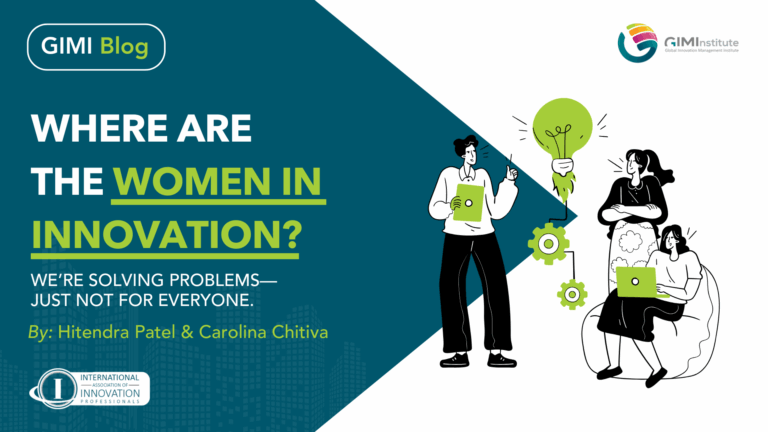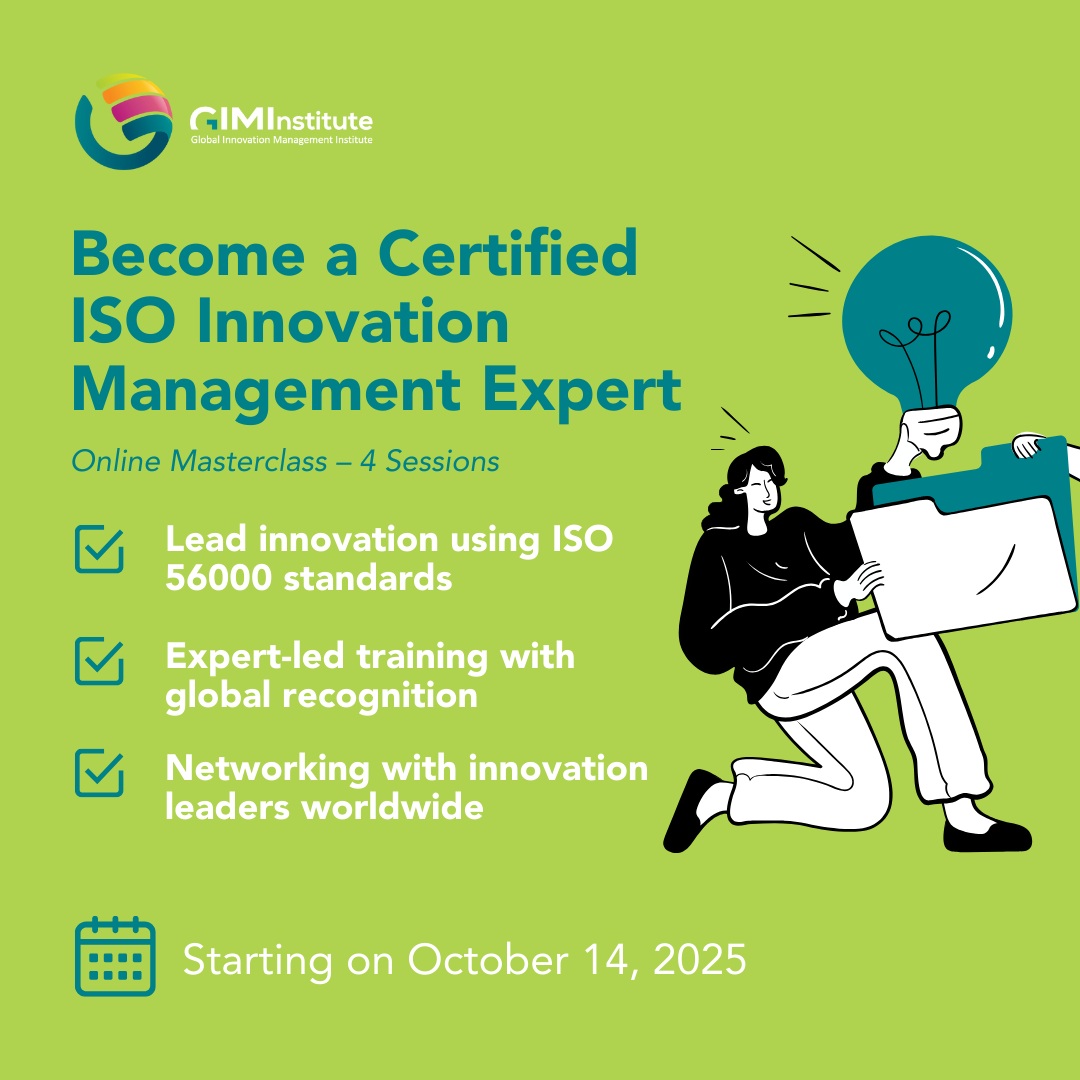Innovation transforms economies, improves lives, and reimagines what’s possible. But what happens when innovation doesn’t include everyone?
Today, too many innovations are still being designed without women in the room. In labs, boardrooms, startups, and funding rounds, women remain underrepresented—and that absence shows in the solutions we produce.
The question is not just “Where are the women in innovation?”
It’s: How much better would our solutions be if they truly included them?
1. Women Make 80% of Financial Decisions—Yet Are Rarely Involved in Creating the Products They Buy
Women control $31.8 trillion in global consumer spending (NielsenIQ, 2024) and drive 70-80% of household purchasing decisions (World Metrics, 2024)
Despite this, they remain vastly underrepresented in the innovation pipeline:
- Only 16% of inventors listed on patents are women (WIPO, 2022)
- Fewer than 30% of product development roles are held by women (McKinsey, 2023)
- Just 2.3% of VC funding goes to all-women-founded startups (Crunchbase, 2022)
This isn’t a pipeline issue—it’s an access and recognition problem. Women are already innovating. But their work is undervalued, underfunded, or ignored.
2. Innovation Has Historically Come Through a Male Lens
History shows what happens when women are left out—or erased:
- Rosalind Franklin’s DNA breakthrough was overshadowed by Watson and Crick’s Nobel Prize
- Hedy Lamarr’s co-invention of frequency-hopping—key to Wi-Fi—went unrecognized in her lifetime
- Lise Meitner’s discovery of nuclear fission was credited to Otto Hahn
- Margaret Knight had to sue to stop a man from patenting her invention for flat-bottomed paper bags
These are not exceptions—they reveal a system that silences women’s contributions.
Today, women are innovating in overlooked areas—childcare, maternal health, mental health—but these fields are often dismissed as “soft” or secondary.
Many products—from phones to policies—are designed around a male default. The result? Design flaws that range from frustrating to dangerous:
- Smartphones too large for smaller hands
- Protective equipment that doesn’t fit women’s bodies
- Crash test dummies based on average men, leaving women 73% more likely to be seriously injured (NHTSA, 2022)
- Medical trials that excluded women, leading to misdiagnoses and incorrect treatments
Even space isn’t immune: NASA canceled an all-female spacewalk in 2019 due to a lack of medium-sized suits.
And in tech? Apple’s HealthKit launched without a menstrual tracker—because “no one thought of it.”
These aren’t minor oversights. They reflect a system where men’s needs are the norm—and women’s are optional.
3. Even Today, Innovation for Women Often Means “Shrink It and Pink It”
Too often, products designed “for women” are just smaller versions of male-focused designs—colored pink:
- “Bic for Her” pens: identical to regular pens, just pastel
- Pink tools with no ergonomic adjustments
- Fitness trackers that don’t fit women’s wrists or needs
- VR headsets that ignore different facial structures or hairstyles
- Voice assistants that default to female personas, reinforcing stereotypes
What’s missing is real problem-solving.
By contrast, when women lead innovation, we get:
- Thinx: Period underwear replacing tampons
- Willow: Silent, wearable breast pumps
- Elvie: Tech supporting pelvic floor health
- Hey Jane: Telemedicine abortion care
- Flex: Redesigned menstrual discs for comfort
This isn’t about adding a feminine touch. It’s about solving the right problems—with empathy, precision, and creativity.
4. This Is a Massive Untapped Opportunity—So How Do We Capture It?
The areas where women lead—caregiving, maternal health, financial inclusion—are often dismissed as “niche.” But that’s a failure of imagination, not market size.
When you design for women, you serve households, communities, and economies.
Consider the numbers:
- Care Economy: Worth over $6 trillion globally, and growing (World Economic Forum, 2023)
- Menstrual & Maternal Health: Impacts 2+ billion people (WHO, 2024), yet receives less than 2% of VC funding (Forbes, 2024)
- Workplace Flexibility & Mental Health: Essential to retaining talent post-pandemic
- Financial Inclusion: Women control vast spending power yet remain underserved by banks and insurers
By 2025, women are projected to hold over 60% of the world’s wealth.
By 2030, $30 trillion will move into their hands via intergenerational transfer (McKinsey, 2022).
This isn’t just the future of inclusion—it’s the future of business.
5. More Women in Innovation = Better Business, Smarter Solutions
The case for inclusion isn’t just moral—it’s measurable.
- Companies in the top quartile for gender diversity on executive teams are 33% more likely to outperform their peers on profitability (Mc Kinsey & Co, 2023)
- Inclusive teams outperform non-inclusive teams by 80% in business performance (Center for Human Capital Innovation, 2024).
Investing in gender-inclusive innovation isn’t charity—it’s strategy.
According to GIMI’s Innovation Potential Assessment, 64% of women score in the high innovation category—excelling in empathy, reframing, and problem sensing.
These capabilities are foundational to the Diverge → Connect → Converge → Emerge model. At the divergence stage, diverse teams identify better problems—and ultimately deliver better solutions. Homogeneous teams miss what they don’t see.
What Can We Do Monday Morning?
- Start Early—and Sustain It
- Rewire Education: Teach innovation across all subjects, not just STEM. Highlight women innovators.
- Build Mentorship Pipelines: Connect girls to women leaders across fields.
Train Teachers: Use tools like UNESCO’s Gender Equality Toolkit to counter classroom bias.
- Fix the System—Not the Women
- Redefine Innovation: Prioritize caregiving, health, and inclusion—not just tech.
- Diversify Decision-Makers: Put more women in roles shaping strategy and funding.
Design for Her: Support women-led startups with targeted capital and scale support.
- Fund What Matters
- Invest Through a Gender Lens: Back funds like Aruwa Capital, Portfolia, The Case for Her.
- Set Procurement Targets: Allocate 10–20% of contracts to women-led innovators.
- Demand Transparency: Require gender-disaggregated VC funding data.
- Make Women Visible
- Celebrate, Spotlight, Repeat: Recognize women innovators publicly.
- Teach Her-Story: Include overlooked female inventors in education and media.
- Call Out the Gaps: No women on stage? No female founders pitching? Ask who was excluded.
When Women Lead Innovation, Everyone Wins
Innovation drives progress—but too often, it excludes half the world. When women aren’t in the room, we miss real needs, overlook trillion-dollar markets, and reinforce outdated defaults.
Women control 70-80% of consumer spending and will hold most global wealth within this decade. Yet they receive just 2% of venture funding and remain sidelined in innovation roles.
This isn’t just a gap—it’s a missed opportunity.
More women in innovation means better ideas, stronger returns, and smarter solutions for all.
If we want innovation that truly works, we must build it with—and for—everyone.
——-
References
Center for Human Capital Innovation. (2024). Inclusive teams outperform non-inclusive teams by 80% in business performance. Retrieved from https://centerforhci.org/diversity-as-a-revenue-engine-what-16-studies-reveal/
Crunchbase. (2022). VC funding statistics. Retrieved from https://www.crunchbase.com/
Forbes. (2024). Less than 2% of VC funding goes to menstrual and maternal health. Retrieved from https://www.forbes.com/
McKinsey & Company. (2022). By 2030, $30 trillion will move into women’s hands via intergenerational transfer. Retrieved from https://www.mckinsey.com/
McKinsey & Company. (2023). Companies in the top quartile for gender diversity on executive teams are 33% more likely to outperform peers on profitability. Retrieved from https://www.mckinsey.com/
NielsenIQ. (2024). Women control $31.8 trillion in global consumer spending. Retrieved from https://nielseniq.com/
National Highway Traffic Safety Administration (NHTSA). (2022). Women 73% more likely to be seriously injured in crashes. Retrieved from https://www.nhtsa.gov/
World Economic Forum. (2023). Care Economy worth over $6 trillion globally and growing. Retrieved from https://www.weforum.org/
World Health Organization (WHO). (2024). Menstrual and maternal health impacts 2+ billion people. Retrieved from https://www.who.int/
World Metrics. (2024). Women drive 70-80% of household purchasing decisions. Retrieved from https://worldmetrics.com/
World Intellectual Property Organization (WIPO). (2022). Only 16% of inventors listed on patents are women. Retrieved from https://www.wipo.int/







